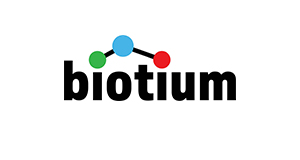CTLA4 / CD152 (Negative Regulator of T-Cells)(L4P2F5.F10), CF740 conjugate, 0.1mg/mL
CTLA4 / CD152 (Negative Regulator of T-Cells)(L4P2F5.F10), CF740 conjugate, 0.1mg/mL
SKU
BTMBNC741696-500
Packaging Unit
500 uL
Manufacturer
Biotium
Availability:
loading...
Price is loading...
Description: CTLA4 (CD152) is a cell surface receptor that behaves as a negative regulator of the proliferation and the effector function of T cells. It contains a V domain, a transmembrane domain, and a cytoplasmic tail. Alternate transcriptional splice variants, encoding different isoforms, have been characterized. The membrane-bound isoform functions as a homodimer interconnected by a disulfide bond, while the soluble isoform functions as a monomer. Mutations in this gene have been associated with insulin-dependent diabetes mellitus, Graves disease, Hashimoto thyroiditis, celiac disease, systemic lupus erythematosus, thyroid-associated orbitopathy, and other autoimmune diseases. The novel finding that CTLA-4 molecule is expressed and functional on human tumor cells opens up the possibility of antitumor therapeutic intervention based on targeting this molecule. Primary antibodies are available purified, or with a selection of fluorescent CF® Dyes and other labels. CF® Dyes offer exceptional brightness and photostability. Note: Conjugates of blue fluorescent dyes like CF®405S and CF®405M are not recommended for detecting low abundance targets, because blue dyes have lower fluorescence and can give higher non-specific background than other dye colors.
Product origin: Animal - Mus musculus (mouse), Bos taurus (bovine)
Conjugate: CF740
Concentration: 0.1 mg/mL
Storage buffer: PBS, 0.1% rBSA, 0.05% azide
Clone: L4P2F5.F10
Immunogen: A synthetic peptide from CTLA4 (exact sequence is proprietary)
Antibody Reactivity: CD152/CTLA4
Entrez Gene ID: 1493
Antibody Application Notes: For coating for ELISA, order Ab without BSA/Higher concentration may be required for direct detection using primary antibody conjugates than for indirect detection with secondary antibody/Optimal dilution and staining procedure for a specific application should be determined by user/Recommended starting concentrations for titration are 1-2 ug/mL for most applications, or 1 ug/million cells/100 uL for flow cytometry
Product origin: Animal - Mus musculus (mouse), Bos taurus (bovine)
Conjugate: CF740
Concentration: 0.1 mg/mL
Storage buffer: PBS, 0.1% rBSA, 0.05% azide
Clone: L4P2F5.F10
Immunogen: A synthetic peptide from CTLA4 (exact sequence is proprietary)
Antibody Reactivity: CD152/CTLA4
Entrez Gene ID: 1493
Antibody Application Notes: For coating for ELISA, order Ab without BSA/Higher concentration may be required for direct detection using primary antibody conjugates than for indirect detection with secondary antibody/Optimal dilution and staining procedure for a specific application should be determined by user/Recommended starting concentrations for titration are 1-2 ug/mL for most applications, or 1 ug/million cells/100 uL for flow cytometry
| SKU | BTMBNC741696-500 |
|---|---|
| Manufacturer | Biotium |
| Manufacturer SKU | BNC741696-500 |
| Package Unit | 500 uL |
| Quantity Unit | STK |
| Reactivity | Human, Mouse (Murine), Rat (Rattus), Cow (Bovine) |
| Clonality | Monoclonal |
| Isotype | IgG1 kappa |
| Host | Mouse |
| Conjugate | Conjugated, CF740 |
| Product information (PDF) | Download |
| MSDS (PDF) | Download |

 Deutsch
Deutsch







